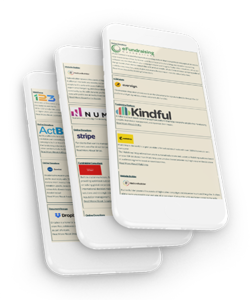What are the different versions?
(Paper Only): This version does not pull any signers to Section 4 – Verification on the efile or PDF
$25 Report Itemization: This version has a $25.00 Threshold instead of $100.00 for both Receipts & Expenses
$50 Report Itemization: This version has a $50.00 Threshold instead of $100.00 for both Receipts & Expenses
CA Form 460 Standard: This version has a $100.00 Threshold for both Receipts & Expenses
Itemize All: This version itemizes ALL transactions regardless of amount
Itemize All Contributions: This version itemizes ALL transactions regardless of amount on Schedules A/B/C
Self-Employed Work Address: This version pulls work address for self-employed individuals listed on Schedules A/B/C/H/I
Static Aggregate: This version calculates aggregate totals on a Static Basis (as of the end of the period) rather than Running Basis (as of the date of each transaction)
What are some of the other options?
Amended: When Amending a report, be sure to select the previously filed report from the Amended Compliance Report drop down to ensure the correct Report Number (that appears on the first page of the originally filed report) is pulled. The Amendment Number is which amendment this report is. For example, if you have already filed 2 amendments, Amendment Number would be 3. When e-filing an amendment, the Original Report Number should be the original filing ID of the ORIGINAL report rather than the filing ID of the most recent amendment.
Current Election: An election date is required when Non-Election is selected. When this election type is selected, 01/01/1900 will appear on the report.
Ending Investment Balance: This is used in the Line 18 Cash Equivalents calculation, which includes investments that cannot be readily converted to cash. (NOTE: Most common amount is 0.) If you see a transaction with [info] in front of the amount, this indicates the Split transaction has no cash impact on the summary totals. The local agency will know what this refers to when they see it.
Now that I have the criteria, what next?
Why are some pages blank?
Why do the Column B numbers not match the Key Stats section on the Dashboard?
Why are there no ECTD (Election Cycle To Date) amounts for paid or forgiven loans?
What do I do if I’m satisfied with the results and ready to file?
Why is my committee’s address showing up twice on the e-filing?
This is most likely because your address is set as both your reportable address and your mailing address. The reportable and mailing address get pulled separately onto the report, so if they’re the same, it’s expected to see it twice.
How do I get the Treasurer and Principal Officer signatures to show on page 1?
Ensure you have the Treasurer and Principal Officer relationships set up on your filer record. The Principal Officer signature will only pull to page 1 if the committee is not a candidate committee.






